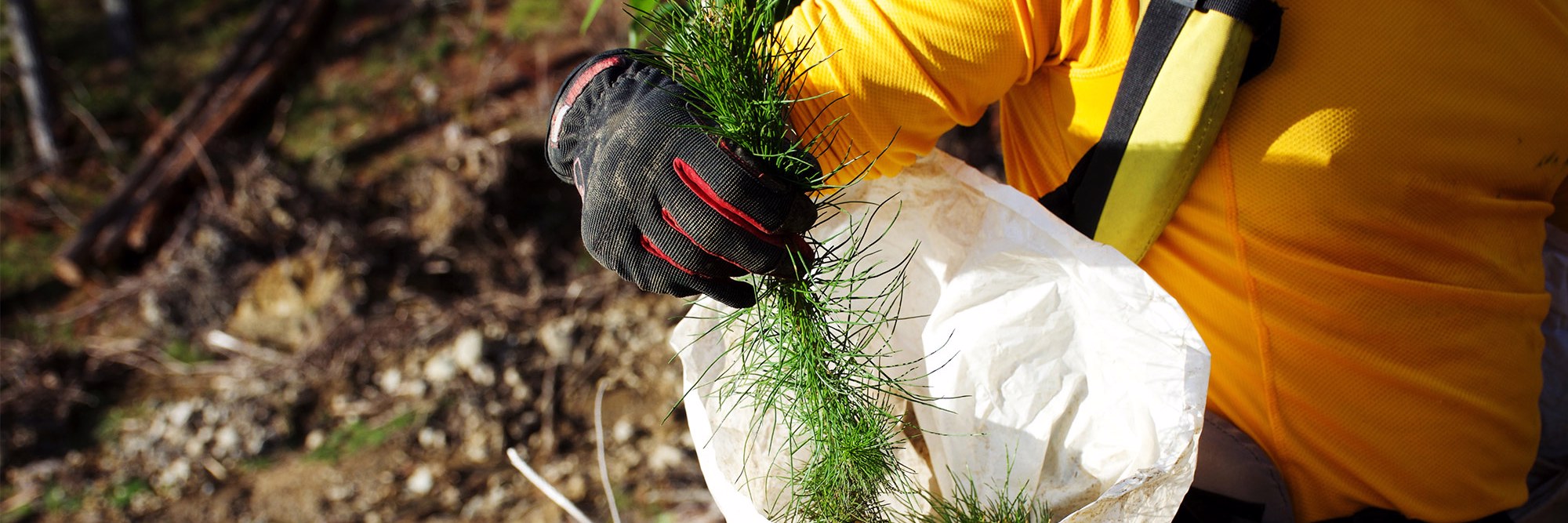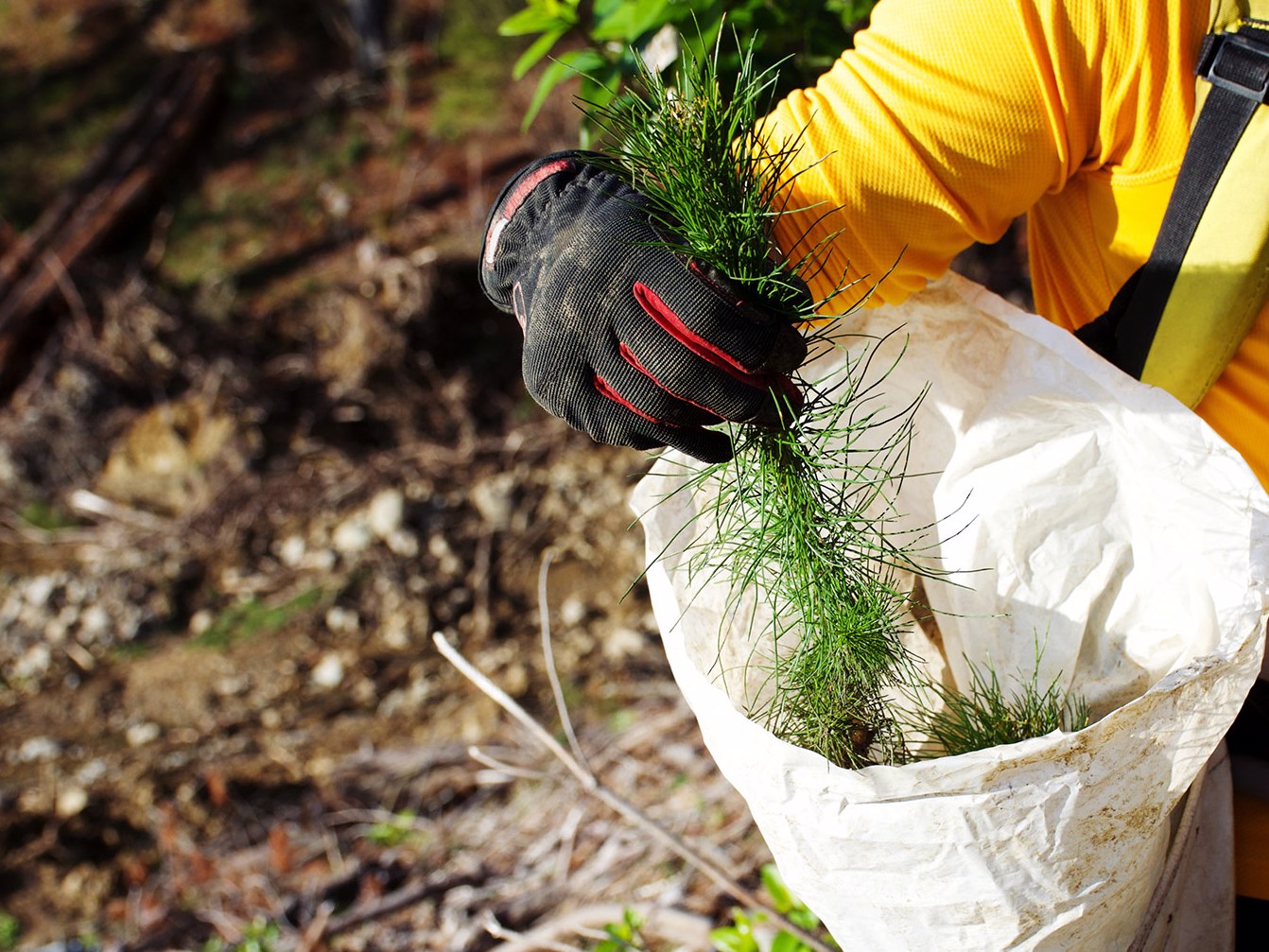Tāmata Hauhā is an initiative that utilises carbon sequestration and the Emissions Trading Scheme (ETS) to create income to enable Māori landowners to develop and diversify their whenua into profitable forestry, agricultural or horticultural land.
Literally meaning ‘growth or restoration from carbon dioxide’, Tāmata Hauhā is the result of a meeting of minds between Blair Jamieson and Lance Iwikau, two former MPI Māori agribusiness advisers.
Motivated by a desire to see Māori positioned to buy back whenua that had been lost and frustrated by what they saw as well-meaning government projects that were not always helpful on the ground, they started to look at Māori land that was of marginal productivity, graded 6-8, to explore how carbon might become an enabler of greater value. After a few conversations, Blair and Lance combined their skills and backgrounds to frame-up their idea.
Tāmata Hauhā staff are all Māori landowners and understand the struggles and shortage of suitable finance to develop the whenua.
A meeting with Brent Ogilvie of investment firm Pacific Channel – which had been working for five years to find the best way to contribute its skills and networks to help Te Ao Māori at scale – led to the formation of Tāmata Hauhā on 24 October 2021. Within three months it had secured enough funding and interest from Māori land owners to plant three million trees.
To explain how Tāmata Hauhā works, first Māori landowners make available their land (without debt or change of whenua ownership), then Tāmata Hauhā provides all the necessary finance and operational support to plant the land. Once a forest is planted, the project is registered in the ETS to earn carbon units which can be traded or sold. Profits are shared 50:50 over an approximate 20-year timeframe. At the end of the project term, the forest is returned, and the landowner receives 100% of the ongoing profits from the forest. All stakeholders in that time will have created a positive environmental and social impact and generated a good return on their investment.
Programmes provided and managed by Tāmata Hauhā include permanent forestry, permanent transitional forestry, and production forestry. The choice of exotics and natives is determined through discussions with landowners to provide consideration to the balance of native exotic planting and of kaitiakitanga. This can lift the productive contribution of low productivity land, which may not be able to be used for other productive uses, from often $85 per hectare per year to between $1000 and $1300 per hectare per year.
Tāmata Hauhā manages the whole project on behalf of the landowner and provides options to ensure that each whenua is looked after for the long-term. This can involve providing the finance for purchasing and planting the trees, preparing the land, planting the trees, and managing the forests.
“We also complete all the paperwork and the dealings with Government departments and liaison with land-ownership groups,” says Blair.
So far Tāmata Hauhā has planted 330 hectares of land, and its aiming to close on 2,000 hectares by late October this year. Soon to plant 200,000 seedlings per week, the goal is to plant two million seedlings this year.
Tāmata Hauhā management are all Māori landowners and understand the struggles and shortage of suitable finance to develop the whenua. Tāmata Hauhā’s aspiration is reflected in its tohu (logo), with the three circular units representing ‘he whenua’, ‘he tāngata’ and ‘he taurikura’.
“Just as the molecular structure of CO2 mirrors the linking of carbon and oxygen molecules, so too are the whenua and the taurikura linked to tāngata whenua – they are not distant or disconnected as they have been in recent history. At its heart, Tāmata Hauhā is about increasing the capacity and connectedness of people and whenua, increasing Māori prosperity, and delivering sustainable environmental outcomes for future generations – while understanding shorter term profit is important,” says Blair.
Tāmata Hauhā stakeholders accept that success and prosperity is aligned with the wider aspirations and goals of Māori landowner partners.
“This means working with landowners to understand their aspirations and goals. We want to know first what they are thinking, to understand their goals, and then formulate the business plan. We see carbon as the enabler; to improve your land, you need carbon sequestration and cash flow. We want to be an enabler of hapū objectives, and try to do so in a sustainable way, creating a nursery for future generations – a future for native forests,” says Blair.
Feedback from Māori partners so far has been hugely positive. Tāmata Hauhā is now looking at designing an ESG bond to scale up.
MinterEllisonRuddWatts is proud to be working with Tāmata Hauhā to help achieve its ambitions.




